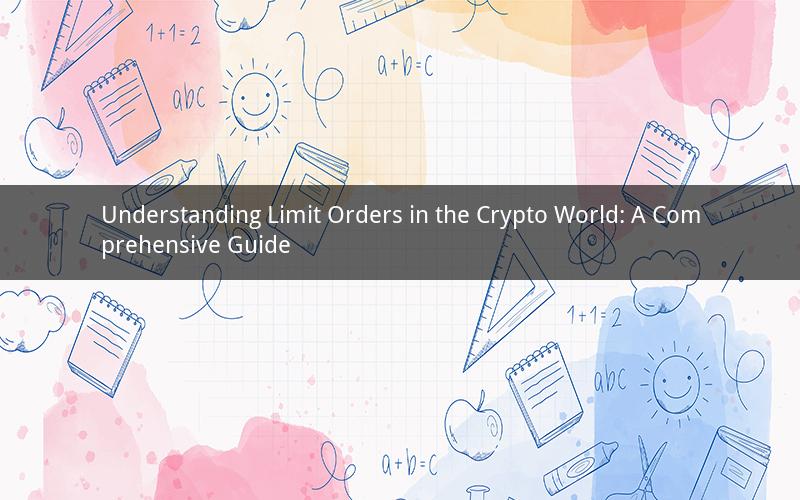
In the rapidly evolving cryptocurrency market, traders are constantly seeking ways to optimize their trading strategies. One such tool that has gained popularity is the limit order. But what exactly is a limit order in crypto, and how does it work? This article aims to provide a detailed explanation of limit orders in the crypto world, along with their benefits and potential drawbacks.
What is a Limit Order?
A limit order is an order placed by a trader to buy or sell a cryptocurrency at a specific price or better. Unlike a market order, which executes immediately at the current market price, a limit order will only be executed when the market price reaches the specified limit price or better. This feature gives traders more control over their trades and allows them to take advantage of price movements.
How Does a Limit Order Work?
When placing a limit order, traders must specify two key elements: the limit price and the order type. The limit price is the price at which the trader wants to buy or sell the cryptocurrency, while the order type can be either a buy limit or a sell limit.
1. Buy Limit Order: A buy limit order is executed when the market price reaches or exceeds the specified limit price. This means that if the market price is below the limit price, the order will not be executed. Traders use buy limit orders to purchase a cryptocurrency at a lower price than the current market price.
2. Sell Limit Order: A sell limit order is executed when the market price falls to or below the specified limit price. This allows traders to sell their cryptocurrency at a higher price than the current market price.
Benefits of Limit Orders
1. Price Control: Limit orders provide traders with the ability to control the price at which they buy or sell their cryptocurrency. This can be particularly beneficial in a volatile market, where prices can fluctuate rapidly.
2. Risk Management: By setting a specific limit price, traders can minimize their risk by ensuring that their trades are executed at a desired price or better.
3. Cost-Effective: Limit orders can be more cost-effective than market orders, as they prevent traders from paying excessive fees due to rapid price movements.
4. Peace of Mind: With a limit order, traders can set and forget their trades, knowing that their orders will only be executed when the market price reaches their specified limit.
Drawbacks of Limit Orders
1. Execution Risk: Limit orders are not guaranteed to be executed, as they depend on the market price reaching the specified limit. This can be a drawback in a highly volatile market, where prices can change rapidly.
2. Slippage: In fast-moving markets, the limit price may not be reached, resulting in slippage. Slippage occurs when the market price moves significantly from the limit price, causing the trade to be executed at a less favorable price.
3. Time Constraints: Limit orders have an expiration date, after which they are canceled. This means that traders must monitor their orders and ensure they are executed before the expiration date.
4. Market Impact: In certain market conditions, such as a high-flying bull market, limit orders may not be executed as quickly, as traders are more likely to buy at higher prices.
5. Complexity: For beginners, understanding and utilizing limit orders can be complex. It requires knowledge of market dynamics and the ability to predict price movements.
Frequently Asked Questions
1. What is the difference between a limit order and a market order?
A limit order allows traders to set a specific price at which they want to buy or sell their cryptocurrency, while a market order executes immediately at the current market price.
2. Can a limit order be canceled?
Yes, a limit order can be canceled before it is executed. However, it is essential to monitor the order to ensure it is canceled before the market price reaches the specified limit.
3. How do I set a limit order?
To set a limit order, you need to specify the limit price and the order type (buy limit or sell limit) in your trading platform.
4. What is slippage, and how can it affect my limit order?
Slippage occurs when the market price moves significantly from the limit price, causing the trade to be executed at a less favorable price. To minimize slippage, traders should monitor their limit orders and consider placing them in highly liquid markets.
5. Can I set a limit order with a specific expiration date?
Yes, some trading platforms allow traders to set an expiration date for their limit orders. This ensures that the order is canceled automatically if it is not executed within the specified time frame.
In conclusion, limit orders are a valuable tool for traders in the crypto world. By providing price control, risk management, and cost-effectiveness, they can help traders achieve their trading goals. However, it is crucial to understand the potential drawbacks and monitor limit orders closely to ensure they are executed as intended.